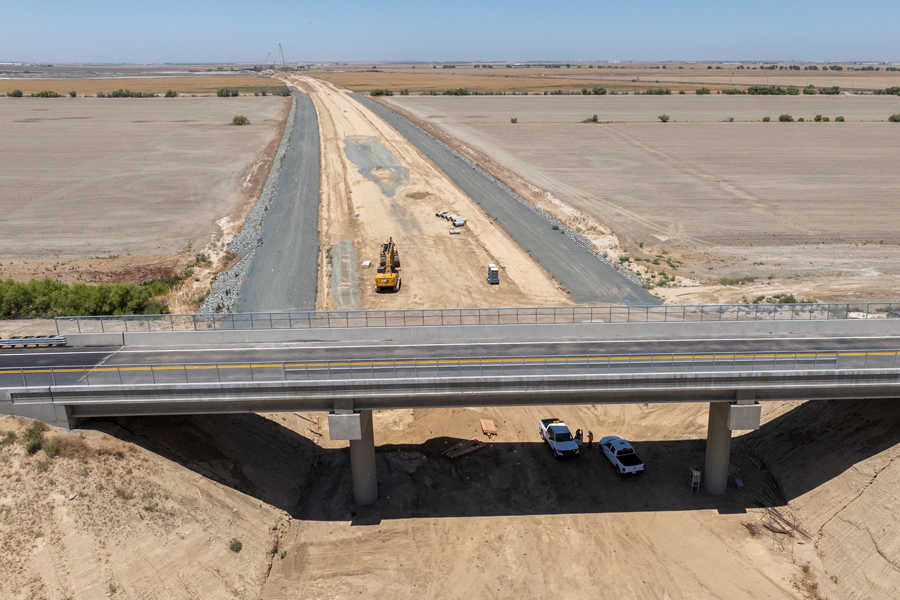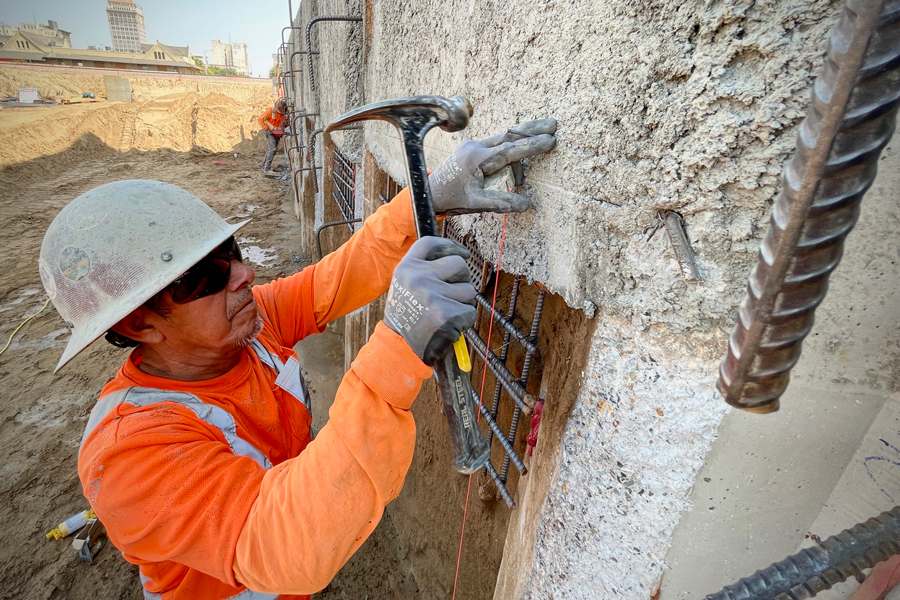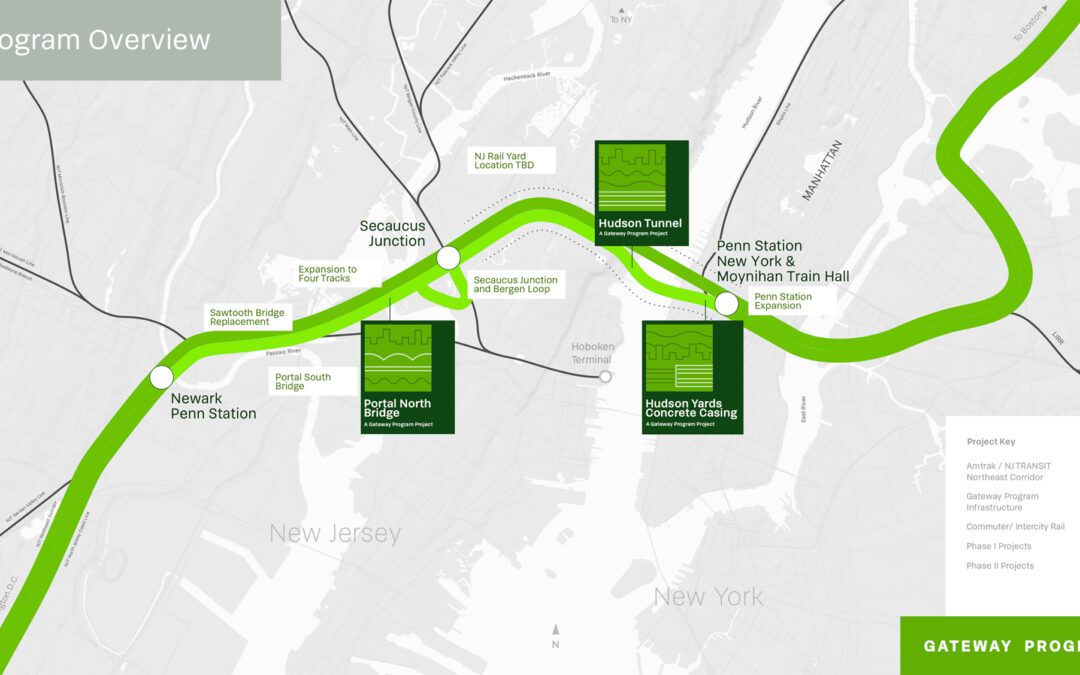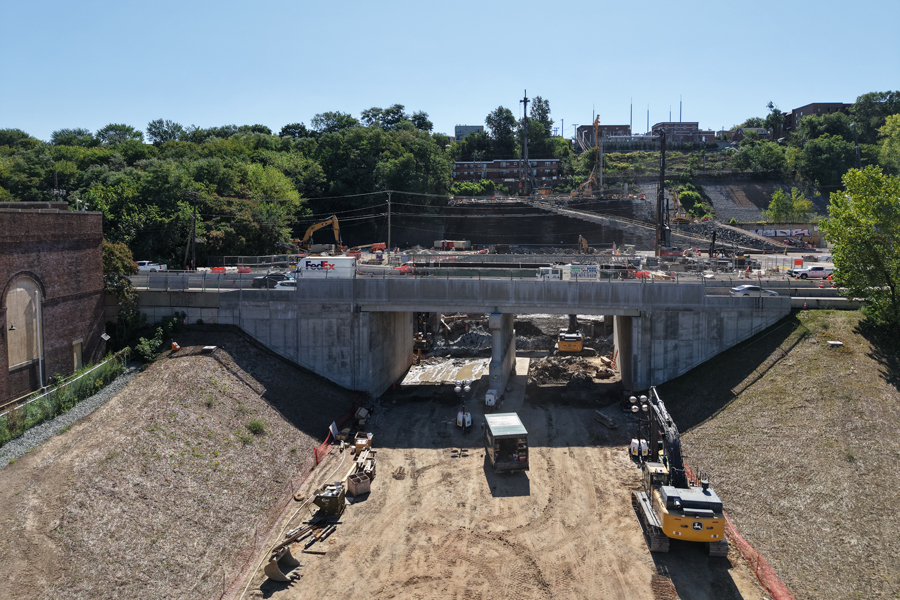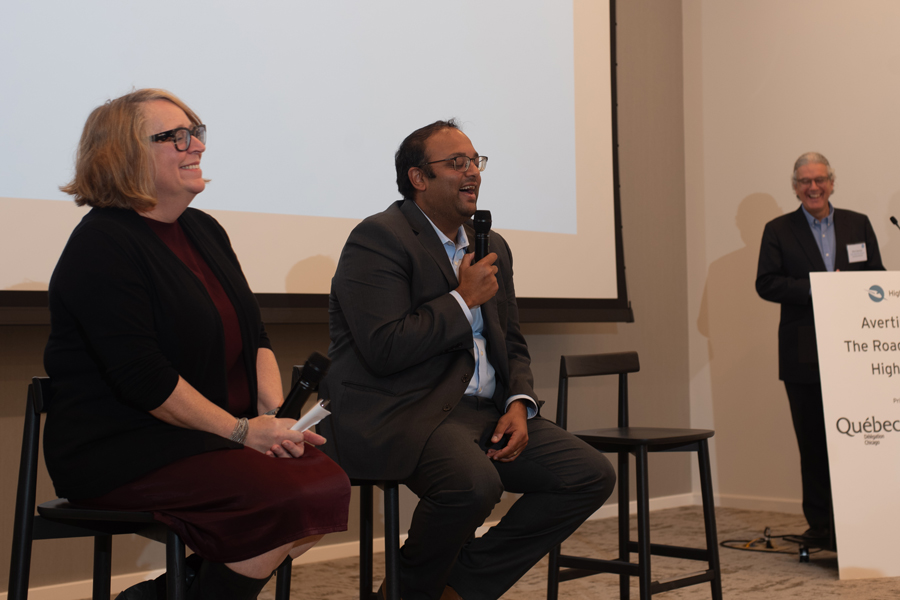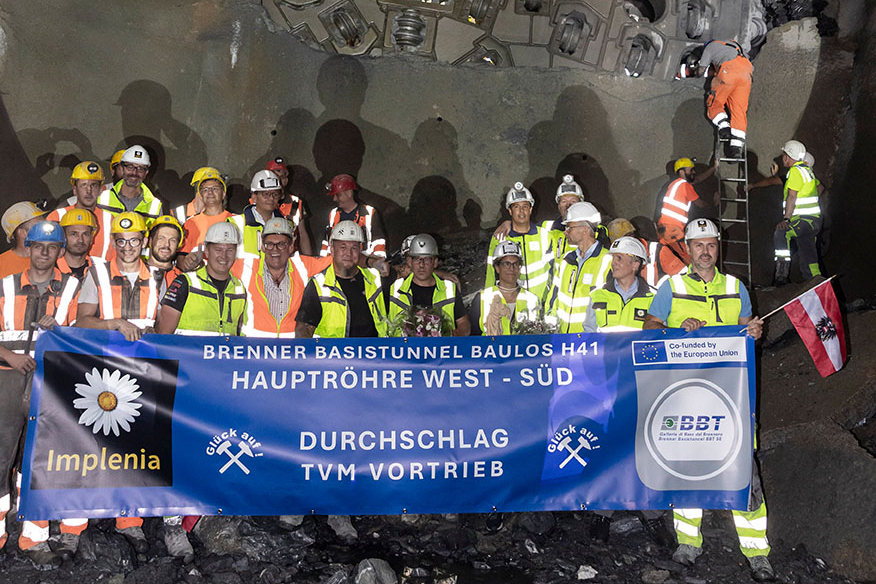The Gateway Project, the centerpiece of which is a new rail tunnel beneath the Hudson River between New Jersey and New York City, has been terminated, President Trump said Wednesday at a White House news conference at which he addressed various subjects. Two weeks...
California is vowing to fight the Trump administration’s decision to cancel $4 billion in funding for its high-speed line from Los Angeles to San Francisco.
“Trump wants to hand China the future and abandon the Central Valley. We won’t let him,” Gov. Gavin Newsom said in a statement. He also promised to pursue “all options” to restore the funding.
In February, President Donald Trump ordered the US Department of Transportation to review the project, falsely asserting that the line had become “much shorter” than the original plan and would only serve “little places way away” from San Francisco and Los Angeles. “We’re going to start a big investigation into that,” Trump said.
Despite Trump’s claim—and despite numerous false reports by media outlets over the years—the California High Speed Rail Authority has never wavered from its plan to build the nearly 500-mile line from San Francisco to Los Angeles.
The US Department of Transportation announced the funding cuts yesterday.
California High Speed Rail Authority’s CEO, Ian Choudri, said the decision breaches legally binding agreements, and he underscored the recent progress on the line. “The Authority has met every obligation, as confirmed by repeated federal reviews, as recently as February 2025,” Choudri said. “America’s only high-speed rail project underway is fast approaching the track-laying phase, with 171 miles under active construction and design, 15,500 jobs created, and more than 50 major structures completed. This is no time for Washington to walk away on America’s transportation future.”
Construction is underway or complete on 96 miles of guideway for the line’s first, 171-mile segment, which stretches from Merced to Bakersfield. Trains are expected to begin running on the line in the early 2030s. Nearly all of the total, 494-mile line from San Francisco to Los Angeles is environmentally cleared and construction ready.
“It doesn’t make sense [that we don’t have HSR]”
Trump has occasionally expressed support for high-speed trains. In a chat with Elon Musk during his 2024 presidential campaign, for example, he said that high-speed trains in other countries “go unbelievably fast” and are “unbelievably comfortable with no problems. And we don’t have anything like that in this country. Not even close. And it doesn’t make sense that we don’t.”
Nonetheless, Trump said on his social media site on Wednesday that he was “thrilled to announce that I have officially freed you from funding CA’s disastrously overpriced, HIGH SPEED TRAIN TO NOWHERE.” Trump also claimed that the project had burned through hundreds of billions of dollars. The DOT’s press release put the figure at $15 billion. It also repeated Trump’s “train to nowhere” dig, as did multiple media outlets—including Fox Business, the New York Post, and NBC News.
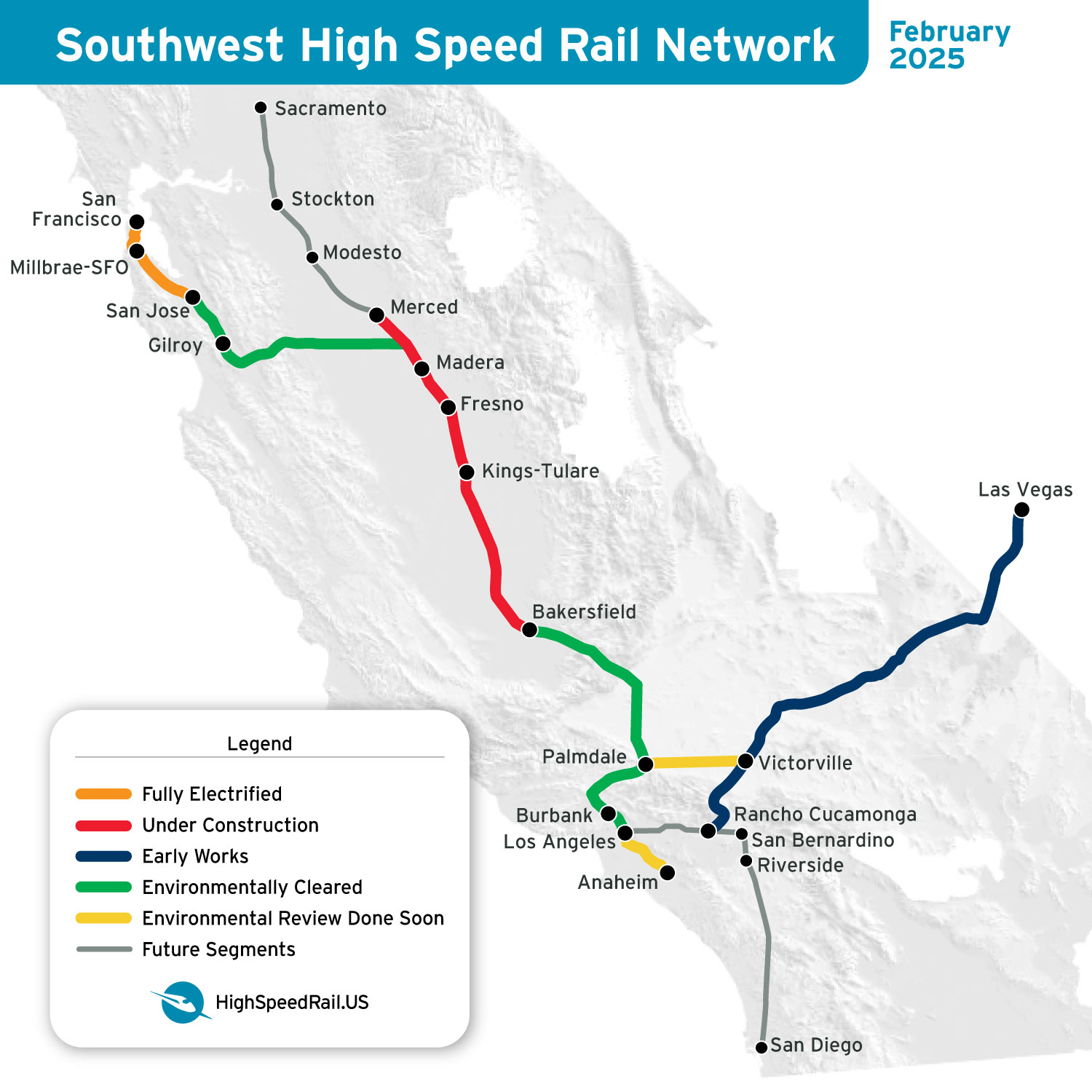
So it’s worth noting that this Central Valley “nowhere”—where the first segment of high-speed line is being built—is California’s fastest-growing area. It’s home to about 6.5 million people, which is roughly the combined population of Montana, Rhode Island, Delaware, South Dakota, North Dakota, Alaska, and Vermont. And it is projected to add another 5 million by 2060. The “little places” far away from California’s big cities (as Trump called them) have 28 institutions of higher education. And Central Valley farmers grow about 250 different crops, producing about one-fourth of the nation’s food supply.
At the Our Towns site, which is currently exploring the Central Valley in a series of articles, authors Deborah and James Fallows write that it “is an important, and under-covered, part of America. It is at the center of long-standing debates about California’s water supply, about its immigration policy, about its economic inequalities, even about the routes for its HIgh-Speed Rail system.”
New partnerships as the path forward?
In addition to fighting the Trump administration in court, California will continue to pursue other funding sources. The estimated total cost of the full line—from San Francisco to Los Angeles—is $128 billion.
In January, at a forum organized by the Authority, about 400 experts met to “discuss strategies to build the system smarter and faster,” which led to “meaningful private sector engagement, including interest from private equity firms exploring new financing opportunities.”
In May, CEO Choudri said that private-sector interest in the project “is strong—and continuing to grow.” The Authority floated several potential opportunities for forging public-private partnerships, including “commercializing assets—such as trainsets, station facilities, track access, fiber, and real estate,” in addition to pursuing transit-oriented development and contracting with shippers on express deliveries. “Now is the time for California to show leadership by seizing this ‘once in a project lifetime opportunity’ to unlock private capital and build the future of transportation in California,” Choudri said.
Also in May, Gov. Newsom reaffirmed his commitment to the project by proposing to allocate $1 billion annually to high-speed rail from the state’s cap-and-trade program. As the Alliance noted at the time, this funding stream could help stabilize the Authority financially and give investors greater confidence in its viability. The legislature is still debating Newsom’s proposed budget.
Overall, 2025 has amounted to a reset for the project—in response to not only the Trump administration’s opposition but broader political discussions about cutting through red tape and moving projects from the drawing board to construction and completion. Both Newsom and Choudri, who became the Authority’s CEO last fall, have recently emphasized the importance of building California’s high-speed line faster and smarter while controlling costs.
Despite the Trump administration’s vocal opposition to the project generally—and to the “train to nowhere” segment particularly—Californians seem to be on board with the plan. A Politico/UC Berkeley poll of more than 1,000 California voters in April found that 67 percent of respondents support the project, overall. That includes 42 percent of Republican voters. A poll from 2022 found that 56 percent of voters, overall, supported it.
“Walking away now as we enter the track-laying phase would be reckless,” Newsom said in May. It would waste billions already invested in the project and would let “job-killers cede a generational infrastructure advantage to China.”
Take Action
Tell Governor Newsom to keep up the fight for high speed rail
The Latest from HSRA
Our Latest Blog Posts
Check out the latest news, updates, and high speed rail insights from our blog!
